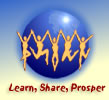A Best-Practice Blueprint for Banishing “Burning Hassles”
by Adele Sommers

Does working in your organization seem like navigating an obstacle course? Are you constantly confronted with methods, tools, systems, or processes that are missing, broken, or simply unworkable?
If you and your team are ready to name and eliminate the ridiculous roadblocks that have been impeding everyone’s productivity, you’ve come to the right place.
This article offers a time-tested, six-step blueprint for discovering, prioritizing, and eradicating the “burning hassles” that are driving you, your colleagues, or your customers crazy. If you systematically follow the steps below, you should be able to banish the blockades that have barred people from achieving breakthrough results.
1. Schedule a meeting to kick off the “hassle hunt.”
Explain the reason for the session and the process you will be using (outlined in the steps below). Typically, a series of meetings occurs on a regular basis, such as during a weekly, biweekly, or monthly working lunch.
The goals entail identifying and eventually removing everyone’s stumbling blocks, which smoothes the way for greater productivity, lower stress, and higher morale. The ground rules include being candid without being confrontational or critical of others, and keeping a positive outlook on the purpose and the process.
During the meeting, ask people to brainstorm all types of concerns, obstacles, and hurdles that are getting in their way. Also ask them to describe each issue in terms of its effects rather than whose fault they think it is.
You might want to consider “priming the pump” even before the meeting. For example, you could ask the group to think about and jot down ideas regarding the challenges that seem to be preventing the organization from smoothly fulfilling its mission. With enough advance notice, gathering this type of preliminary input can accelerate the process of identifying everyone’s barriers to success.
When collecting ideas in advance, you could proceed in at least two ways:
 During the meeting, people can simply read off the ideas they have brought with them. A leader and/or facilitator could capture the ideas electronically, on sticky notes, on flip charts, or a combination. Then everyone can proceed to discuss them. During the meeting, people can simply read off the ideas they have brought with them. A leader and/or facilitator could capture the ideas electronically, on sticky notes, on flip charts, or a combination. Then everyone can proceed to discuss them.
- If you’d like to do more front-end work with your group’s inputs, you could ask people to submit issues ahead of time. Before the meeting, simply sort the issues into groupings of similar concerns, and give each grouping a label.
During the meeting, you could distribute the issues in list format, and possibly even in chart format to highlight the frequencies of burning hassles within each category. The ensuing discussion will undoubtedly clarify these issues, and may further redefine the groupings.
Either one of these advance data-collection methods can provide a preview of the meeting’s objectives. Rather than brainstorming all of the issues from scratch during the meeting, people are able to focus on comparing notes, clarifying issues, and identifying additional concerns.
2. Define each problem clearly.
 After collecting the group’s basic inputs before or during the meeting, direct everyone’s attention toward clarifying the issues. Many hassles point to broken, redundant, or convoluted systems and processes rather than personal shortcomings. After collecting the group’s basic inputs before or during the meeting, direct everyone’s attention toward clarifying the issues. Many hassles point to broken, redundant, or convoluted systems and processes rather than personal shortcomings.
Therefore, be as specific as possible, and focus more on what occurs rather than who does it.
Attempt to determine the underlying reason for each issue by asking "why" five times — or until your team identifies the root cause(s).
3. Prioritize the hassles by subjecting them to a five-question test.
Use the answers to help determine the order in which to resolve them:
a. What is the perceived impact or severity? For instance, is the level of frustration associated with each hassle high, medium, or low?
b. Are your customers bothered? For example, if an obstacle could impede customer service, or make your offerings difficult to use, it passes this test! A related exercise entails identifying your customers’ top 10 complaints. Look for matches between the group’s hassles and those of your customers.
 c. Can you get a quick resolution? Try to identify which hassles you can reduce or eliminate in the shortest time, such as within three to six months. c. Can you get a quick resolution? Try to identify which hassles you can reduce or eliminate in the shortest time, such as within three to six months.
While you shouldn’t ignore the obstacles that need more time, you can generate a stronger feeling of momentum by tackling the easier ones first. A few quick successes can really boost morale!
d. Can you more easily achieve a business goal? For example, will removing a certain hurdle help the organization attain a goal such as cutting production time? If, say, people are bogged down entering the same data over and over again, and it causes reports to be perpetually late, the hassle passes this test.
e. Is the solution under your group’s control? If you’re in control, you can decide which resolution methods to use. That way, you can reap the benefits more easily. If a hassle isn’t under your control, it’s probably a system-level obstacle that involves other people and processes. To resolve system-level issues, you can get that ball rolling if you: a) identify the factors beyond your control, b) research them, and c) propose a solution that others can perform.
4. Consider a range of possible solutions.
Have your team brainstorm as many ideas as possible. You and your team can then use powerful evaluation tools to weigh the tradeoffs among the solutions, such as by comparing their expense, political feasibility, and practicality side by side.
 And although you could attempt to solve a given problem: And although you could attempt to solve a given problem:
- You also could try not performing annoying tasks if they no longer add value.
- If you know that a cure for a big hassle is in the works, but may not be available for a while, a temporary workaround could be your best short-term solution.
5. Identify actionees to carry out the solutions.
 After prioritizing the issues and brainstorming solutions as explained above, identify actionees or champions who can carry out the solutions. For best results, begin with the highest-priority issues first. After prioritizing the issues and brainstorming solutions as explained above, identify actionees or champions who can carry out the solutions. For best results, begin with the highest-priority issues first.
You might identify primary actionees (who will have both the authority and responsibility to implement the solution) as well as secondary actionees who can assist in the process.
If short on time, identify actionees first, and then let them start identifying solutions before the next progress meeting.
6. Establish a tracking and monitoring process.

Set up a schedule to meet and discuss progress regularly. Start by entering the hassles, priorities, actionees, and progress notes into a spreadsheet, table, or database.
By updating the database before each session, your group can meet and confer on the latest input. Also be sure to identify, discuss, document, and prioritize any new hassles that may arise.
Always remember to use these ground rules:
1) Encourage everyone to be candid, but also to avoid blaming or accusing.
2) Everyone should feel free to speak up without criticism.
3) Everyone can help brainstorm solutions!
In conclusion, with ongoing vigilance and timely action, demoralizing hassles will stop undermining your organization like gophers tunneling through your garden. Your team’s persistent efforts combined with management’s unflagging support will ensure ultimate success!
Copyright 2018 Adele Sommers
|


